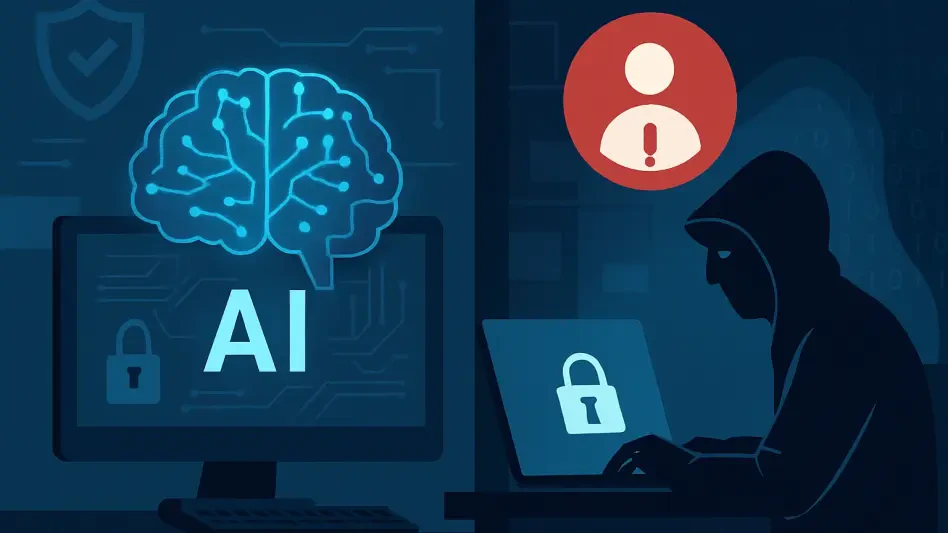Imagine a scenario where a trusted employee unknowingly becomes the gateway for a devastating cyberattack, not through malice, but because an artificial intelligence tool mimics their identity with chilling precision, bypassing every safeguard in place, highlighting the urgent need to rethink security. This is no longer a distant possibility but a pressing reality as AI technologies, particularly generative AI, evolve at an unprecedented pace. Cybersecurity professionals across Europe and beyond are sounding the alarm on insider threats, which are increasingly seen as more dangerous than external attacks. With AI enabling stealthier and faster breaches, the traditional defenses that organizations have relied upon for years are proving inadequate. The urgency to rethink security strategies has never been more critical, as the line between human and machine-driven threats blurs. This growing challenge demands a deeper look into how AI is reshaping the threat landscape and what steps must be taken to stay ahead of these sophisticated risks.
The Rising Danger of AI-Driven Insider Threats
The perception of insider threats has shifted dramatically among cybersecurity experts, with a significant majority now viewing them as a greater risk than external breaches. According to recent findings, 64% of European professionals hold this belief, driven largely by AI’s ability to amplify the scale and speed of attacks. AI agents can replicate trusted identities, operate at machine speed, and execute actions that are nearly impossible to distinguish from legitimate access. This creates a complex challenge for security teams, as distinguishing between authorized use and malicious intent becomes increasingly difficult. Over the past year, more than half of surveyed organizations reported a rise in insider incidents, with 54% anticipating this trend to persist. Industries such as government, manufacturing, and healthcare express the highest levels of concern, with government sectors leading at 73%. This widespread impact across critical sectors underscores the urgent need for a strategic overhaul in addressing these evolving dangers.
Beyond the sheer increase in incidents, the nature of insider threats has become more insidious with AI’s involvement. Generative AI, in particular, has been weaponized to craft convincing phishing attempts, deepfake communications, and automated exploits that evade traditional detection methods. The rapid pace at which these tools operate leaves little room for human intervention, often resulting in breaches before security teams can respond. A striking 53% of organizations note that insider threats are harder to detect due to AI’s role in masking malicious activity. This technological edge not only empowers malicious insiders but also heightens the risk from compromised individuals who may be unaware of their role in an attack. As AI continues to lower the barrier for executing sophisticated schemes, the cybersecurity community faces an uphill battle to adapt defenses to this new reality, pushing for innovative approaches that can match the speed and subtlety of these threats.
Unauthorized AI Usage and Emerging Risks
Another pressing issue compounding insider threats is the unauthorized use of generative AI within organizations. A staggering 67% of surveyed entities report unapproved usage of such tools, with sectors like technology, government, and financial services showing the highest rates at 40%, 38%, and 32% respectively. This unchecked adoption introduces significant security vulnerabilities, including the potential for sensitive data exposure. Recent data indicates a doubling of data loss prevention incidents linked to generative AI, with a notable portion classified as high-risk. Employees using these tools without proper oversight may inadvertently share proprietary information or create backdoors for attackers to exploit. The lack of governance around AI usage not only heightens insider risks but also complicates efforts to maintain a secure digital environment, as organizations struggle to balance innovation with control.
The implications of unauthorized AI usage extend beyond immediate data loss to long-term security challenges. Without clear policies and monitoring mechanisms, organizations risk creating a culture where shadow IT practices flourish, undermining formal security protocols. Many employees may not even recognize the dangers of using unvetted AI applications, assuming they enhance productivity rather than pose threats. This gap in awareness, coupled with the rapid proliferation of accessible AI tools, creates fertile ground for insider threats to take root. Cybersecurity teams must contend with an expanding attack surface where every unauthorized tool could be a potential entry point for malicious actors. Addressing this issue requires not just technical solutions but also a shift in organizational mindset, emphasizing the importance of education and strict governance to mitigate the risks associated with emerging technologies.
Rethinking Defenses for an AI Era
While a vast majority of organizations—88%—have insider threat programs in place, the effectiveness of these initiatives is under scrutiny. Only 44% utilize user and entity behavioral analytics, a critical component for detecting subtle, AI-driven risks. Instead, reliance on traditional tools like identity and access management (IAM), data loss prevention (DLP), and endpoint detection and response (EDR) remains prevalent. These solutions offer visibility but often lack the contextual depth needed to counter sophisticated threats amplified by AI. Although nearly all organizations incorporate AI into their security tooling, a gap in governance and operational readiness persists. Disparities in perception are evident, as many executives believe their AI defenses are fully deployed, while frontline managers report that numerous tools remain in pilot stages. This disconnect highlights the need for alignment in strategy and execution to address the evolving threat landscape.
The inadequacy of conventional defenses against AI-enhanced insider threats was a recurring theme in expert discussions. Traditional systems, designed for slower, human-paced attacks, struggle to keep up with the speed and stealth of machine-driven exploits. Experts advocate for a fundamental shift in approach, emphasizing the integration of behavioral analytics to identify anomalies that signal potential insider risks. Beyond technology, strengthening governance frameworks emerged as a priority, ensuring that AI tools are deployed with clear oversight and accountability. Reflecting on past efforts, security teams recognized that without adapting to the rapid evolution of threats, vulnerabilities persisted. The consensus was clear: a proactive, innovative mindset was essential to safeguard against the next wave of challenges, urging organizations to invest in both advanced tools and comprehensive policies to stay ahead of AI’s dual role as both a defender and a disruptor.








